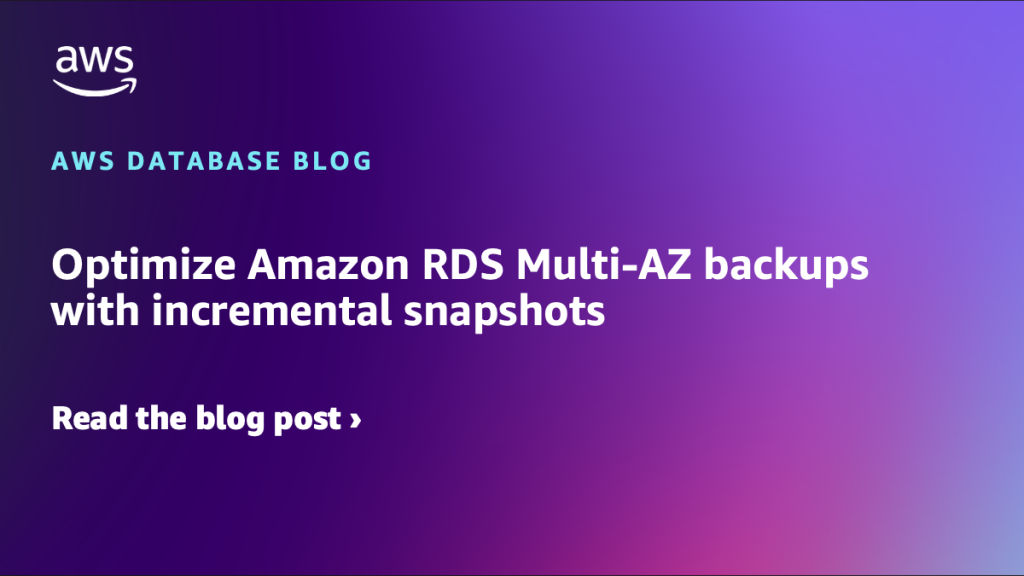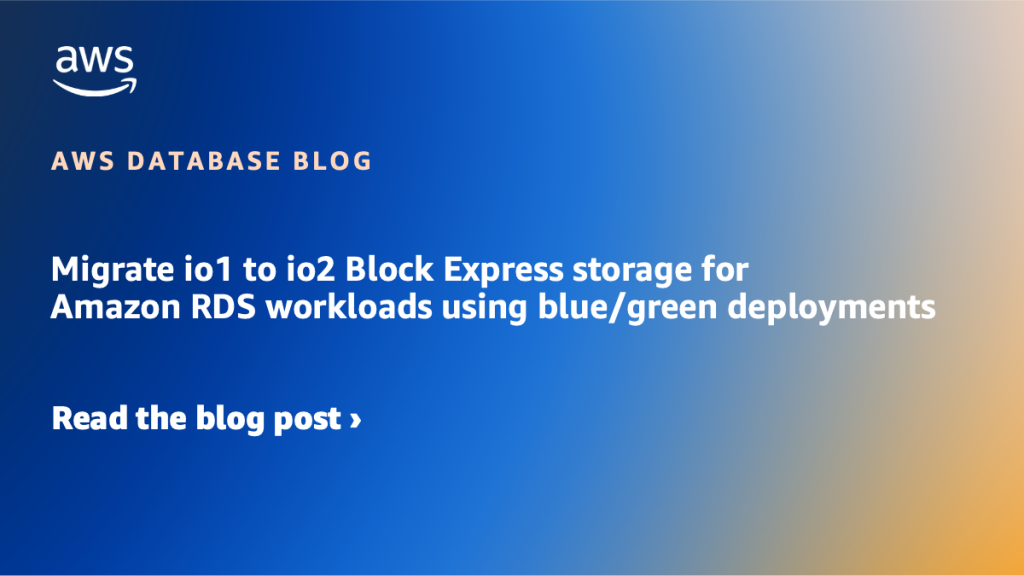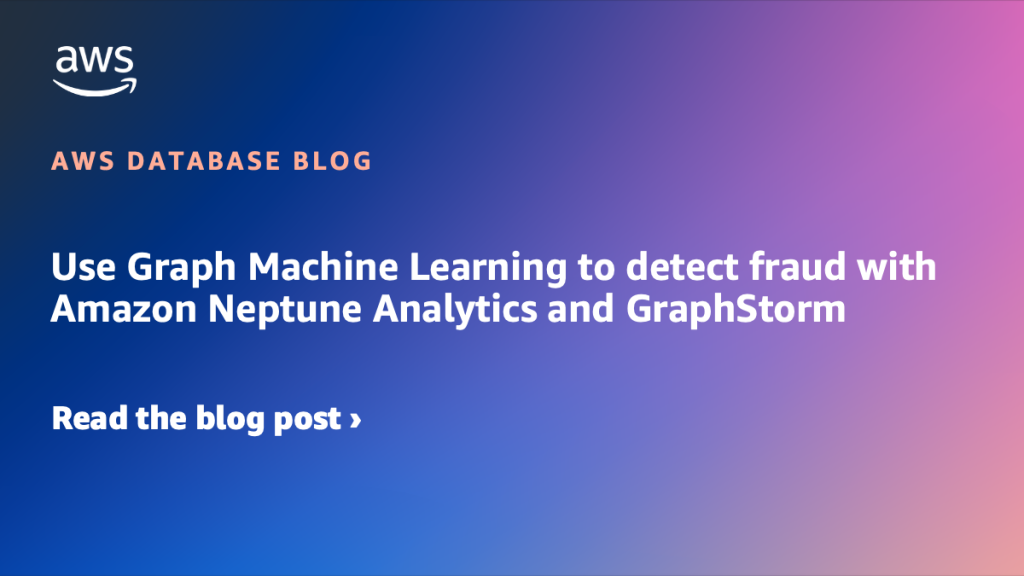AWS Database Blog
Category: Intermediate (200)
Optimize Amazon RDS Multi-AZ backups with incremental snapshots
As your business grows and your databases expand into the terabyte range, optimizing your backup strategy becomes increasingly important for maintaining operational excellence. Modern backup solutions that implement incremental backups where possible, offer an elegant way to protect your valuable data while minimizing maintenance windows and ensuring consistent application performance. In this post, we discuss the aspects of maximizing the use of incremental backups in Amazon RDS, leading to backup times remaining steady even while the database grows.
Migrate io1 to io2 Block Express storage for Amazon RDS workloads using blue/green deployments
Amazon RDS provides two storage types: Provisioned IOPS SSD and General Purpose SSD. They differ in performance characteristics and price, which means that you can tailor your storage performance and cost to the needs of your database workload. In this post, we show how you can migrate from io1 to io2 Block Express Provisioned IOPS SSD storage.
Use Graph Machine Learning to detect fraud with Amazon Neptune Analytics and GraphStorm
Every year, businesses and consumers lose billions of dollars to fraud, with consumers reporting $12.5 billion lost to fraud in 2024, a 25% increase year over year. People who commit fraud often work together in organized fraud networks, running many different schemes that companies struggle to detect and stop. In this post, we discuss how to use Amazon Neptune Analytics, a memory-optimized graph database engine for analytics, and GraphStorm, a scalable open source graph machine learning (ML) library, to build a fraud analysis pipeline with AWS services.
Building resilient applications: design patterns for handling database outages
Database outages, whether planned or unexpected, pose significant challenges to applications. Planned outages for maintenance can be scheduled but still impact users. Unplanned outages are more disruptive and can happen at critical times. Even the most robust and resilient databases will inevitably experience outages, making application resiliency a critical consideration in modern system design. In […]
Understanding resource distribution and performance analysis using AWS DMS enhanced monitoring
When using AWS DMS, replication lags, task stalls, or resource bottlenecks can occur—and identifying the root cause quickly can become critical. The enhanced monitoring dashboard is a comprehensive monitoring tool that provides visibility into critical metrics for database migration tasks and replication instances. In this post, we discuss some use cases showcasing how you can use the enhanced monitoring dashboard.
Upgrade your Amazon DynamoDB global tables to the current version
Amazon DynamoDB is a fully managed, serverless NoSQL database that delivers single-digit millisecond performance for applications at any scale. DynamoDB global tables is a multi-active database feature that replicates data across AWS Regions, enabling local reads and writes. In this post, we explain why we strongly recommend all customers use the Current version for all global tables.
Amazon Aurora Global Database introduces support for up to 10 secondary Regions
In this post, we dive deep into Amazon Aurora Global Database’s new support for up to 10 secondary Regions and explore use cases it unlocks. An Aurora Global Database consists of one primary Region and up to 10 read-only secondary Regions for low-latency local reads.
Achieve up to 1.7 times higher write throughput and 1.38 times better price performance with Amazon Aurora PostgreSQL on AWS Graviton4-based R8g instances
In this post, we demonstrate how upgrading to Graviton4-based R8g instances with Aurora PostgreSQL-Compatible 17.4 on Aurora I/O-Optimized cluster configuration can deliver significant price-performance gains – delivering up to 1.7 times higher write throughput, 1.38 times better price-performance and reducing commit latency by up to 46% on r8g.16xlarge instances and 38% on r8g.2xlarge instances as compared to Graviton2-based R6g instances.
Amazon DynamoDB data modeling for Multi-Tenancy – Part 1
In this series of posts, we walk through the process of creating a DynamoDB data model using an example multi-tenant application, a customer issue tracking service. The goal of this series is to explore areas that are important for decision-making and provide insights into the influences to help you plan your data model for a multi-tenant application. In this post, we define the access patterns and decide on the table design.
Create a unit testing framework for PostgreSQL using the pgTAP extension
pgTAP (PostgreSQL Test Anything Protocol) is a unit testing framework that empowers developers to write and run tests directly within the database. In this post, we explore how to leverage the pgTAP extension for unit testing on Amazon RDS for PostgreSQL and Amazon Aurora PostgreSQL-Compatible Edition database, helping you build robust and reliable database applications.









